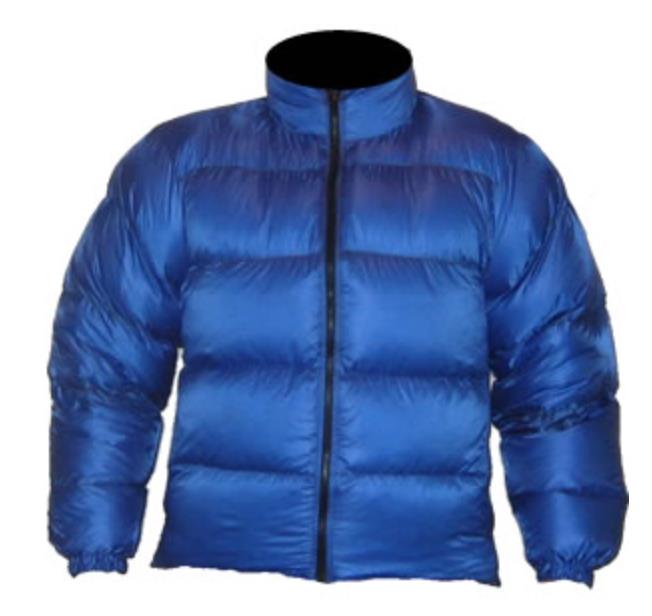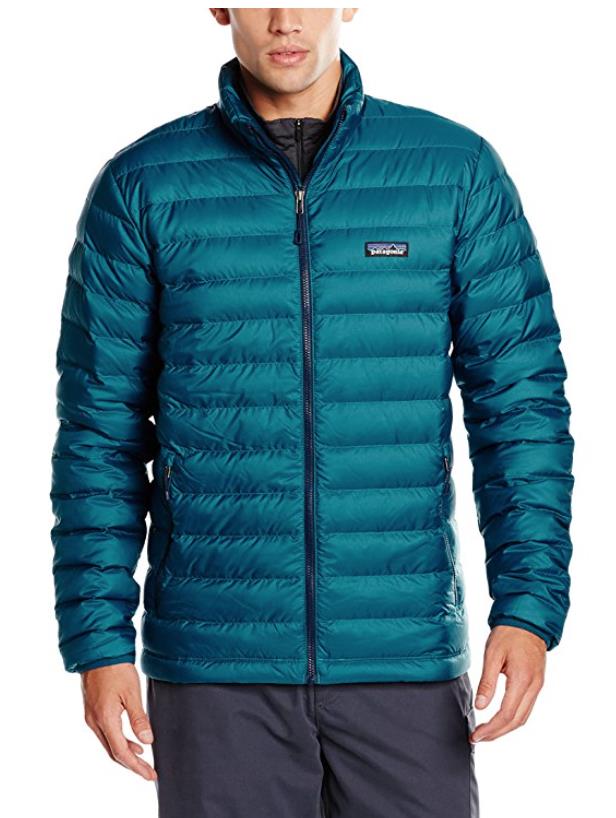Regular readers of my blog know that there are few projects I cannot undertake. Whether it is home improvement, camper mods, or even rebuilding a camper from the ground up – I do most of them myself. The question often comes up, “Do I make any of my own backpacking gear?”
The answer is an emphatic “No.”
Why?
The answer lies in the Time ROI (return on investment). As I have written many times, time to me is a commodity that can be used for whatever I want. Time that is wasted is gone forever. Since my priority is to use as much as my time as possible to go backpacking or camping, there is a point where it isn’t financially feasible to pay someone to do something for me, and I am better off to spend my time doing the work myself instead of spending time engaged in a favorite hobby or pastime. I call this the Time Value Threshold.
Time Value Threshold
When you go to work, your time is worth what you are paid. Each individual must decide what their hourly leisure time is worth. Before I retired, my weekends were worth two days of my pay. So if I could only save a days wages by staying home and doing something myself, but miss out on a weekend of camping or backpacking, it was worth it to me to pay someone and not forgo backpacking or camping. Consider this:
Let’s say that you make $25 per hour at your job and you can work overtime for $37.50 per hour. You spend 5 hours per week doing landscape work at home – it pretty much means each Saturday you are committed to landscape work, which rules out going backpacking on the weekend unless you skip the landscape maintenance and let things get over grown – requiring extra time to catch up the following Saturday.
What if you hired a gardener to do the work for $200 per month? And instead of using up 5 hours of your Recreation Inventory of Time each Saturday for yard work, you worked one hour of overtime each day Monday thru Friday. In four weeks you will have worked 20 hours of overtime at $37.50 per hour, which is $750 before taxes. You pay the gardener $200, put the balance in the bank, IRA, 401K or other investment, which is $550 ($750 – $200 = $550) and now you have every Saturday free to do other things. This is how you grow wealth and maximize your Recreation Inventory of Time. You just freed up every one of your weekends from yard work and you were able to generate an extra $6,600 in income for the year.
Negative Time Value Threshold
Many people change the oil and filter on their cars to save money. Not me. My local Ford dealer will do a lube, oil change, replace the oil filter, inspect the vehicle, and rotate the tires for $39.95. That’s a bargain to me. To do it myself would have negative value. Let’s do an analysis.
I can purchase a brand name oil filter and oil from Auto Zone for $25.88. This means a trip to the parts store to make the purchase. It doesn’t take long to simply change the oil and filter. It probably takes me 30 minutes to rotate my tires, since I don’t have a car lift, plus I cannot put the car up in the air and do an under vehicle inspection. Then when I’m done changing the oil and filter I have to clean up, put my tools aways, take the old oil and filter some where to ethically dispose of it. Basically I end up spending at least two hours, sometimes more to save $15 versus what the Ford dealer will charge me. I am earning $7.50 per hour by doing it myself. The minimum wage in California is $10.50, so I am earning $3 less than the minimum wage… this is a Negative Time Value Threshold. It takes me 30 minutes to drive to and from the Ford Dealership, and they usually complete the service in an hour. During that hour I can do things of value — for example, right now I am sitting in the waiting room while my car is being serviced and instead of doing the work myself, I am writing this blog post. Any by the way, my Ford dealer washes my car for free at the same time, another time saving item I have not factored into this scenario.
However, we must stay focused on the fact that some things just cost too much to pay someone to do versus what you can earn – so it becomes advantageous to do the work yourself. Let’s consider working on your car or your camper; assuming you have the tools and knowledge to do the job. Also keep in mind that the knowledge, which is usually repair instructions, can be found online.
Over the last 17 years of my working career I analyzed tens of thousands of automotive repair orders and on average the amount charged the customer was usually split close to 50-50 for parts and labor. So if the labor was $100, the parts were around $100. Also, most automotive repair facilities and RV dealers charge well over $100 per hour these days. So let’s do a little “what if” exercise.
What If
Suppose you need a car repair and you are quoted $200 for the job. It will take the mechanic an hour to do the job, and the charge will be $100 for labor and $100 for parts. Since you aren’t a mechanic, you look up the repair procedure on the Internet to see if you can do it your self. You can and in the end it takes you twice as long to do the job, which is 2 hours. So right off the bat, you saved $100 on labor.
Most repair shops have a gross profit margin of 40% on parts. So the $100 charge to you for parts will cost the repair facility $60. Often you can find parts on the Internet for about what a repair facility pays. So for our “what if” discussion, you can buy the part online, often from Amazon, for $60. You just saved $40 in parts for a total savings of $140 for two hours of work. You saved $70 per each hour of your time. In essence you just paid yourself $70 per hour. That is 3 times what you earn in your job ($25 per hour) and almost double what you would earn for two hours of overtime pay at $37.50 per hour. Good deal!
But if you are a “Negative Nellie” you will point out that you don’t have any tools. Most simple auto repairs usually only require a few wrenches or sockets and screw drivers. You can buy a basic tool set at Harbor Freight, Home Depot, Lowes or Amazon for around $100. Your first auto repair in this example pays for the tools you need and you still have a $40 savings, not to mention tools that will be available for future repairs.
How We Saved $4,764.77 for 3 Days of Work
A little over a year ago we decided to replace our windows (7 of them) and our 8 foot sliding glass patio door with energy efficient double-paned replacements. We got an estimate for $7,700. We were able to buy the exact same brand and model of windows and the patio door in this quote on the Internet for $2,935.23. I had never replaced a window before, but there were many videos and how-to articles on the Internet. Almost everyone I know thought I was crazy to undertake such a daunting task, but it really was fairly simple work. It took Joyce and me three days to do complete the replacement. That’s two people working 24 hours each, or 48 hours total. Divide our savings of $4,764.77 by 48 hours of work, and we paid ourselves (or saved if you prefer) $99.27 per hour for each of us. Plus we didn’t have to buy any tools, no special tools were needed.
Make Your Own Backpacking Gear?
I would guess the most common DIY backpacking projects are simple alcohol stoves, clothing, quilts, and simple shelters. So let’s discuss how much money you can save by making your own gear, or whether or not you actually save any money at all.
Last month I attended a weekend get together of a bunch of backpackers. There were over 30 people in attendance. Saturday night we were all hanging out around the campfire and I noticed that almost every single person was wearing a light down jacket without a hood. So let’s see what it takes to make a lightweight down filled jacket hoodless jacket.
First of all, most people don’t make their own clothes today. Most of my acquaintances don’t own a sewing machine… Joyce used to own a sewing machine, but she never used it and sold it earlier this year. So more than likely you’re going to need to buy one. I don’t know anything about sewing machines, but the average price on Amazon is about $150. Then you will need thread, thread bobbins, pins and other stuff.
From what I have heard sewing isn’t just about following instructions. It is a learned skill. People often have to make several items before they can make decent clothes, but let’s assume you can do it right the first time. Being a novice, the best way would be to buy a kit that includes the material, down fill, a zipper, a pattern, and instructions. Over on backpackinglight.com it seems that most people who make their own clothing often buy kits from thru-hiker.com who sell a down jacket kit with a lightweight fabric for $144.95

Hmm…
One of the most expensive brands of down clothing is Patagonia. I can buy a Patagonia down jacket on Amazon in my size (large) for $187. I can buy cheaper brands for around $100, and Costco often has decent down jackets for around $100.

The Patagonia jacket definitely looks to be of better quality than the DYI kit.
So here’s the deal… if you are a smart consumer and shop for the best deals, it often costs more to make your own down jacket versus buying one, plus this is before you have to add in a premium for hours of your own time to make it, not to mention buying a sewing machine, learning to use it, and reconciling yourself to the fact you probably won’t use the machine very often.
When Does It Make Sense To Make Your Own Gear?
There is one thing I have not factored into the DIY backpacking gear route: pride in making something yourself. There is value in that. However, I propose that the time spent making gear could be better spent by going backpacking or camping instead.
